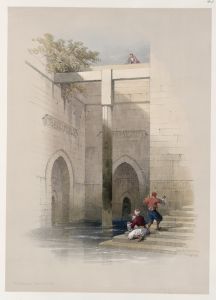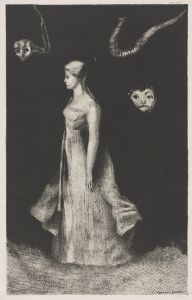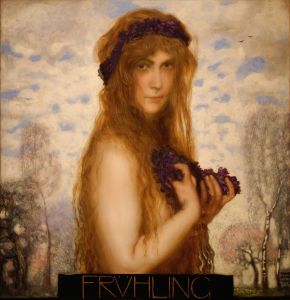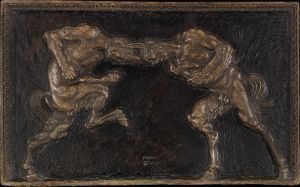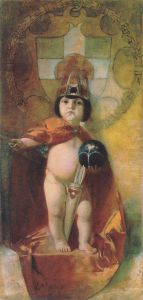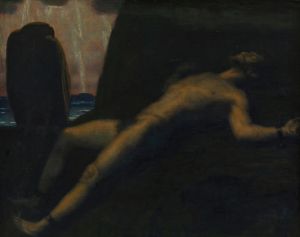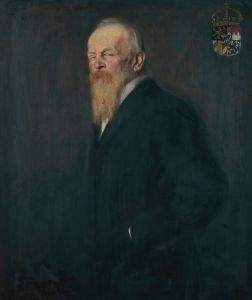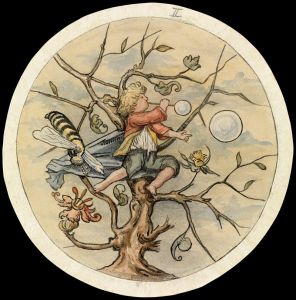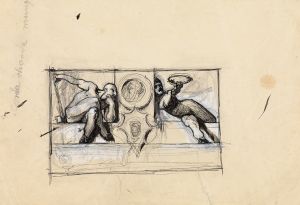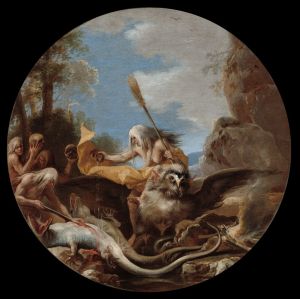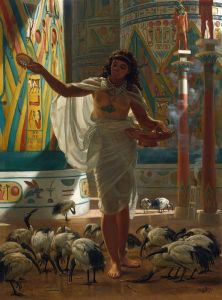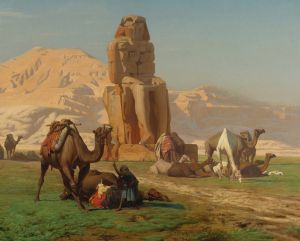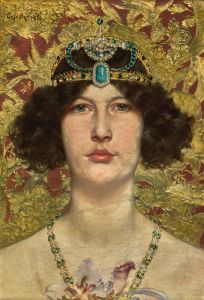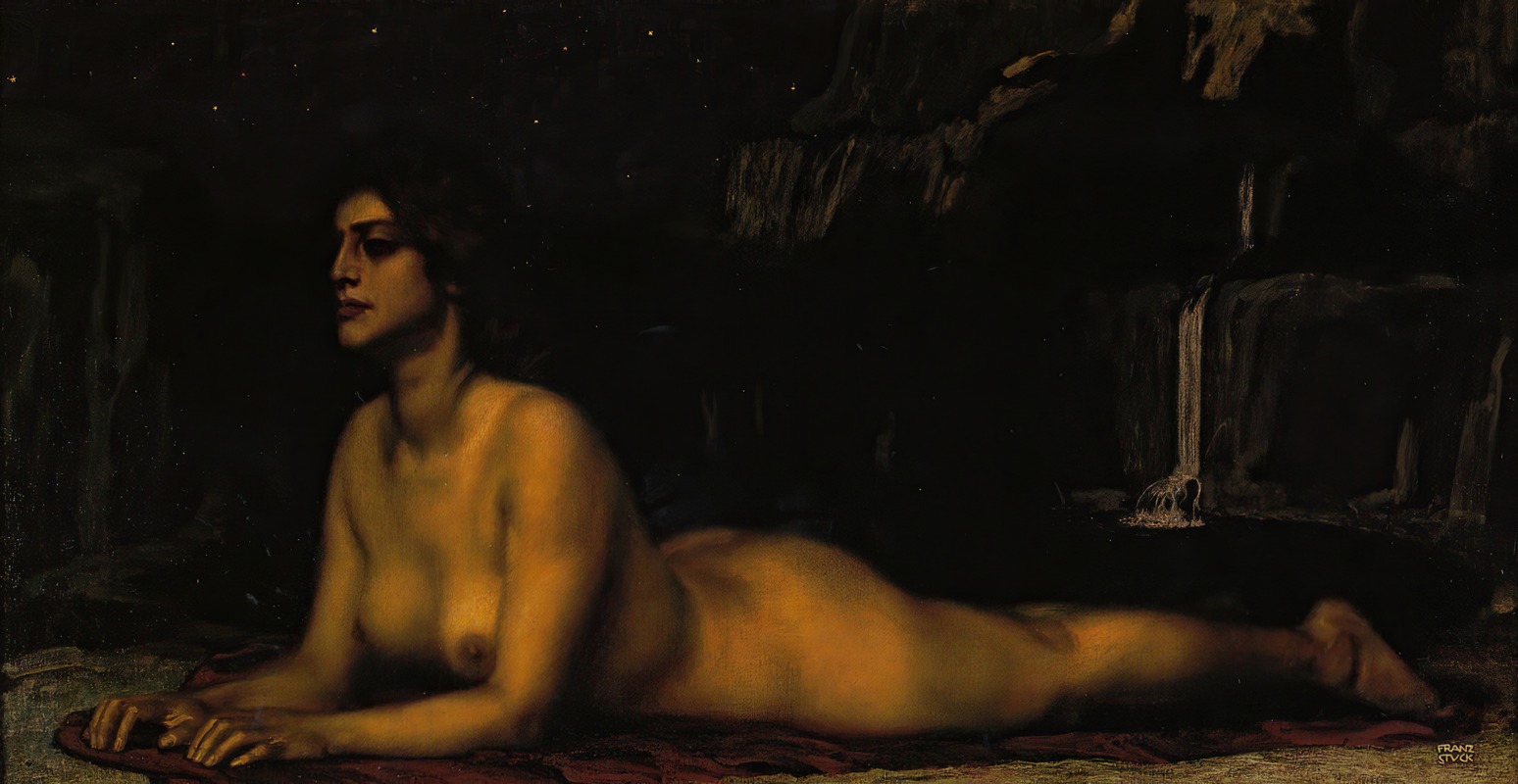
Sphinx
A hand-painted replica of Franz von Stuck’s masterpiece Sphinx, meticulously crafted by professional artists to capture the true essence of the original. Each piece is created with museum-quality canvas and rare mineral pigments, carefully painted by experienced artists with delicate brushstrokes and rich, layered colors to perfectly recreate the texture of the original artwork. Unlike machine-printed reproductions, this hand-painted version brings the painting to life, infused with the artist’s emotions and skill in every stroke. Whether for personal collection or home decoration, it instantly elevates the artistic atmosphere of any space.
Franz von Stuck's painting "Sphinx" is a notable work by the German symbolist artist, created in 1895. Stuck, who was a prominent figure in the Munich Secession movement, often explored mythological and allegorical themes in his art, and "Sphinx" is a quintessential example of his fascination with such subjects.
The painting depicts the mythical creature known as the Sphinx, a figure that has its origins in ancient mythology. In Greek mythology, the Sphinx is typically portrayed as a creature with the body of a lion, the wings of a bird, and the face of a woman. It is famously known for its role in the story of Oedipus, where it poses a riddle to travelers and devours those who cannot solve it. Stuck's interpretation of the Sphinx is both alluring and enigmatic, capturing the dual nature of beauty and danger that the creature embodies.
In "Sphinx," Stuck presents the creature in a reclining pose, with a serene yet mysterious expression. The painting is characterized by its use of dark, rich colors and dramatic lighting, which are hallmarks of Stuck's style. The Sphinx's human face is rendered with a sense of calm and introspection, while the lion's body is depicted with a sense of strength and power. This juxtaposition highlights the duality of the Sphinx's nature, as both a guardian and a threat.
Stuck's "Sphinx" is also notable for its symbolic content. The Sphinx has often been interpreted as a symbol of mystery and the unknown, and Stuck's portrayal emphasizes this aspect. The painting invites viewers to contemplate the nature of the Sphinx and the riddles it represents, both in the mythological sense and in a broader, philosophical context. This aligns with the Symbolist movement's focus on exploring the deeper meanings and emotions behind visual imagery.
The painting was created during a period when Stuck was gaining recognition for his work, and it reflects his mastery of technique and his ability to convey complex themes through his art. Stuck was not only a painter but also a sculptor and architect, and his interdisciplinary approach is evident in the meticulous attention to detail and composition in "Sphinx."
"Sphinx" is housed in the Städtische Galerie im Lenbachhaus in Munich, Germany, where it is part of a collection that includes many of Stuck's other works. The painting continues to be studied and admired for its artistic and symbolic significance, and it remains an important piece within the context of late 19th-century European art.
Franz von Stuck's "Sphinx" exemplifies the artist's skill in blending mythological themes with a distinct Symbolist aesthetic, creating a work that is both visually striking and intellectually engaging. The painting stands as a testament to Stuck's contribution to the art world and his enduring influence on the Symbolist movement.





